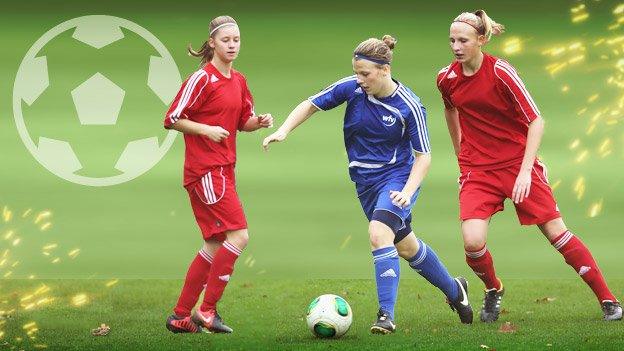Alfredo Di Stefano: Did General Franco halt Barcelona transfer?
- Published

Di Stefano won the European Cup five times with Real Madrid
Having been the brightest star in a team that won the European Cup in the competition's first five seasons, Alfredo Di Stefano is almost unanimously regarded as the greatest player in Real Madrid's history.
The club has gone into a state of mourning following his death on Monday at the age of 88.
As current club president Florentino Perez noted in his emotional tribute,, external in a symbolic way, Di Stefano simply is Real Madrid. His presence looms so large that he came as close as anybody ever will to the status of being "bigger than the club".
Alfredo Di Stefano: Real Madrid legend dies aged 88
But football history could have been different - very different indeed. Because when the magical Argentine forward first opted for a move to Spain, he appeared to be destined not for Real but their eternal rivals Barcelona.
The story of Di Stefano's transfer to Los Blancos is a fascinating and complex web of claims, denials, counter-denials and conspiracy theories involving five clubs in three countries. There are allegations of treachery, a mysteriously ripped-up contract and - possibly - the personal intervention of a dictator.
In the spring of 1952, Di Stefano was already a player of quite some renown. A 25-year-old Argentina international boasting an almost goal-per-game scoring record, he travelled to Spain for a friendly tournament in Madrid with his Colombian club side, Millonarios.
His performances were breathtaking, immediately prompting both Barcelona and Real Madrid to push hard for his signature.
Di Stefano career stats | |
|---|---|
Club | Games/goals |
Huracan | 25/10 |
River Plate | 72/53 |
Millonarios | 294/267 |
Real Madrid | 396/308 |
Espanyol | 60/14 |
Barca appeared to take an early lead in a race that was complicated immensely by the fact that Di Stefano's registration rights were also claimed by Argentine giants River Plate, who were still less than delighted about their star player's controversial (and perhaps illegal) move to Colombia three years earlier.
Nevertheless, with hard-nosed nationalist Catalan lawyer Ramon Trias Fargas leading the negotiations, Barca embarked upon slow but steady progress with both South American clubs. However they made what appears to have been a fatal error by underestimating Millonarios when they enlisted the help of another Catalan who was living in Colombia, Joan Busquets.
Busquets just happened to be a director of Millonarios' biggest local rivals, Santa Fe, and his presence at the bargaining table made the Colombian club suddenly reluctant to agree to the move - especially when Barca strangely submitted an almost derisory initial offer, which was promptly rejected.
Apparently believing that Millonarios were irrelevant and that River Plate were the only club they needed to do business with, Barca reacted to having their bid refused by essentially ignoring such an unwanted development.
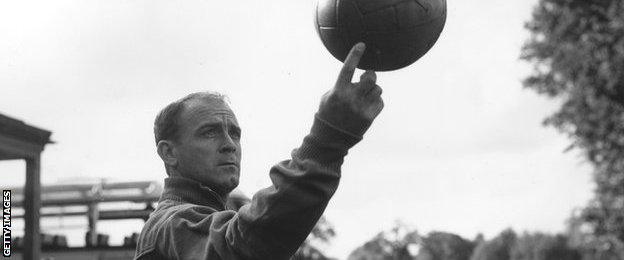
Di Stefano spent eight years playing for River Plate and Millonarios before moving to Madrid in 1953
Instead of taking the rebuffal seriously, they arranged for Di Stefano and his family to leave Colombia and flew them to the north-east of Spain, where he started to settle into life with his 'new' club and even played at least one pre-season friendly for Barca in the summer of 1953.
At that point, however, the Spanish Football Federation (RFEF) intervened by refusing to sanction the transfer on the grounds that Millonarios had not agreed to it. The RFEF dismissed Barca's complaints that the deal had nothing to do with the Colombian club, who the Catalans claimed had signed Di Stefano illicitly in the first place.
Barca refused to budge from their position that they had an agreement with River Plate, who they believed were the legal owners of Di Stefano's registration.
In the meantime, Real president Santiago Bernabeu had taken advantage of the uncertainty to reach a similar deal with Millonarios. An impasse ensued.
When the RFEF eventually reached its verdict in September 1953, it came to the startling compromise that Di Stefano could play for alternate clubs over the course of four years, starting with a season at Real.
Alfredo Di Stefano's honours | |
|---|---|
Five European Cups | 1956, 1957, 1958, 1959, 1960 (Real Madrid) |
Eight Spanish leagues | 1954, 1955, 1957, 1958, 1961, 1962, 1963, 1964 (Real Madrid) |
One Spanish Cup | 1962 (Real Madrid) |
One Intercontinental Cup | 1960 (Real Madrid) |
Two Argentine leagues | 1945, 1947 (River Plate) |
One America Cup | 1947 (River Plate) |
Four Colombian leagues | 1949, 1951, 1952, 1953 (Millonarios Bogota) |
Humiliated Barca president Marti Carreto was forced to resign and the interim board ripped up the contract, freeing Di Stefano to join Real for good on the agreement that Los Blancos paid back to Barca the 4.5 million pesetas fee they had already handed over to River Plate.
The rest, as they say, is history, but plenty of questions remain unanswered. Why did Barca fail to reach a deal with Millonarios? Why did the RFEF refuse to sanction Di Stefano's transfer when Fifa had already waved it through? And why then did Barca, if they believed in their case, tear up the contract rather than sticking to their guns?
The big underlying question is the extent to which Spain's ruler, General Franco, was involved.
Throughout the 1950s, Real were regarded by their (many) enemies as Franco's team or the 'Regime Team'. Although the extent of the dictator's meddling in sporting matters has probably been exaggerated, it certainly was true that he had dealings over the years with Real president Bernabeu and occasionally exerted significant influence upon the RFEF.

Spain's dictator, General Franco, governed the country from 1939 to 1975
Any conspiracy theory carries unusual weight from such a politically explosive era. Strange as it sounds, there have even been unproven claims that one or more of Barca's negotiators were acting as double-agents for Real, deliberately sabotaging the deal to ensure Di Stefano eventually moved to the capital.
Even now, the circumstances of Di Stefano's arrival in Spain is an almost uniquely emotive topic.
Barca fans angrily believe their team was robbed by dark governmental forces. The club's official website bitterly bemoans "a strange federative manoeuvre with Francoist backing".
Real supporters bristle with indignation at the suggestion of underhand dealings and maintain they simply took advantage of Barca's sloppiness rather than enlisting the assistance of General Franco.
Whatever the exact truth of the matter, the end result was that Di Stefano did move to Madrid, making his debut in a friendly against French club Nancy on 23 September 1953.
A month later, the first Clasico of the season took place at the Bernabeu. Real won 5-0… and Di Stefano scored four. A legend was born.
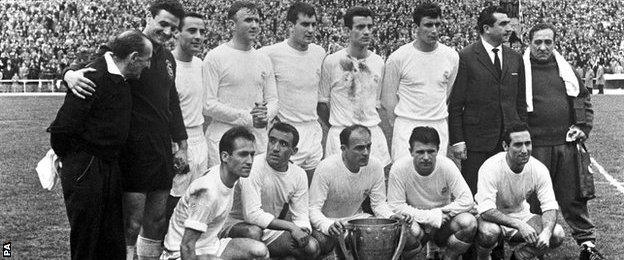
Di Stefano's Real side is regarded as one of the greatest club teams of all time
- Published7 July 2014
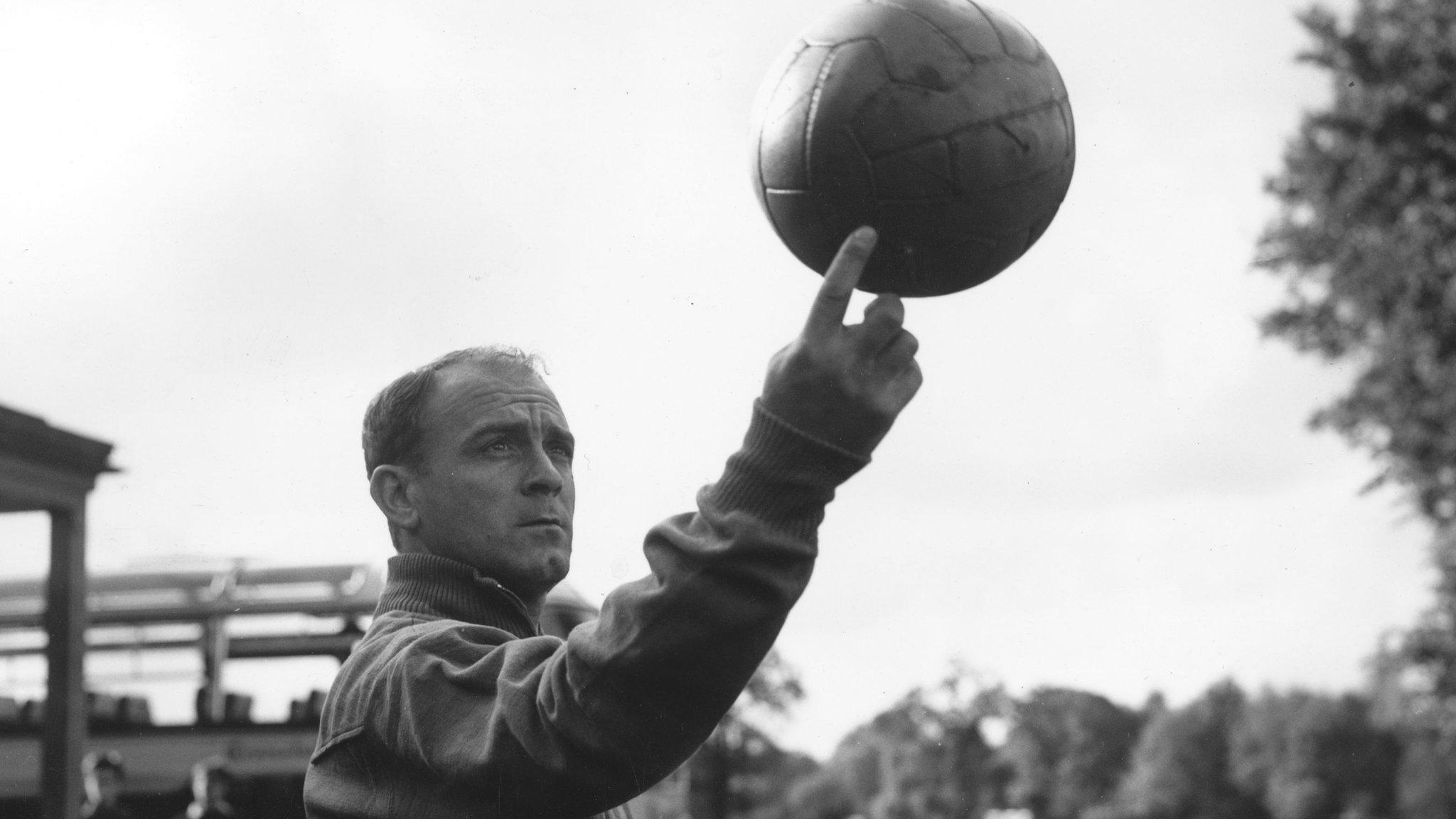
- Published7 July 2014
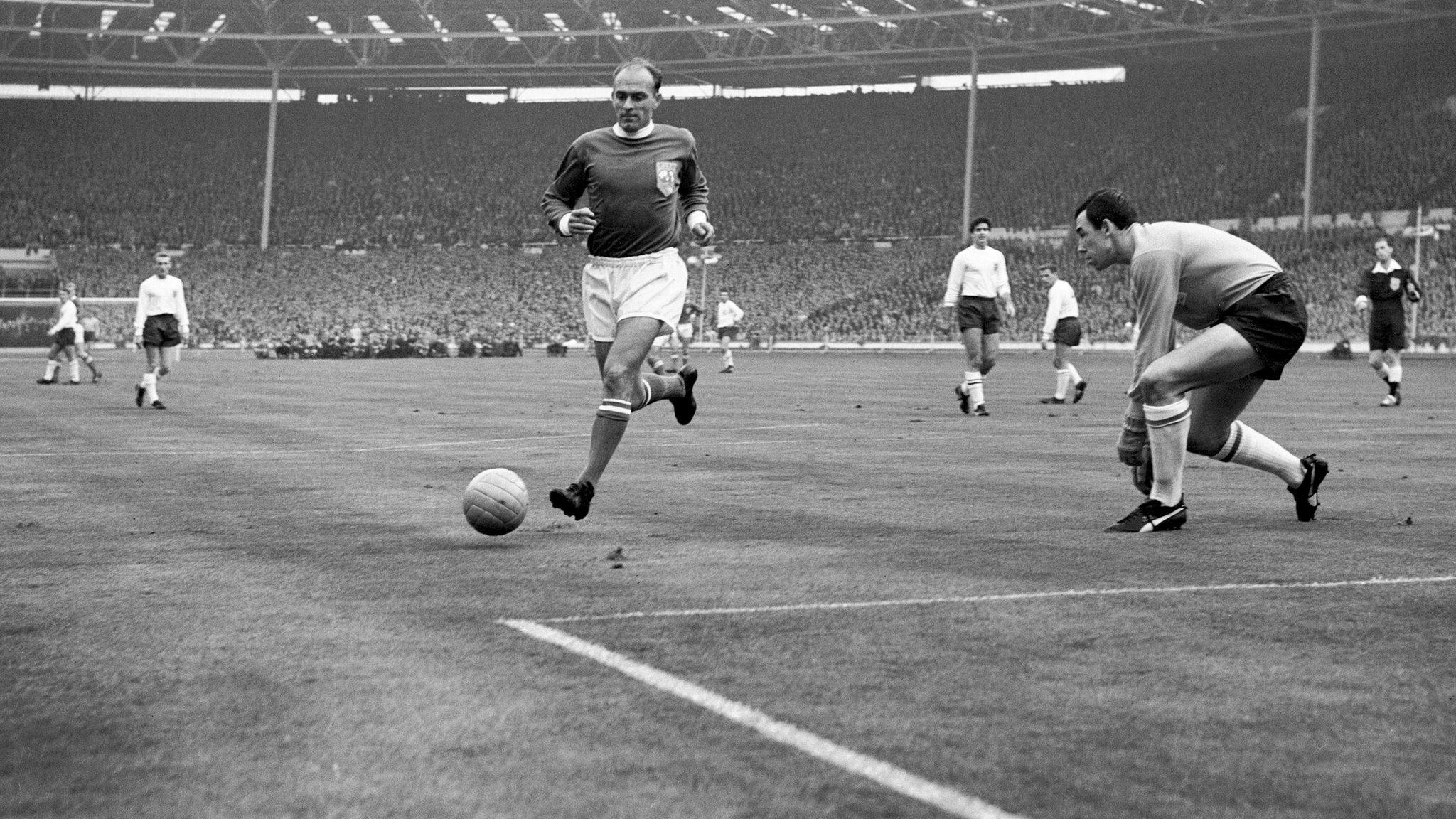
- Published6 December 2013

- Published7 June 2019
